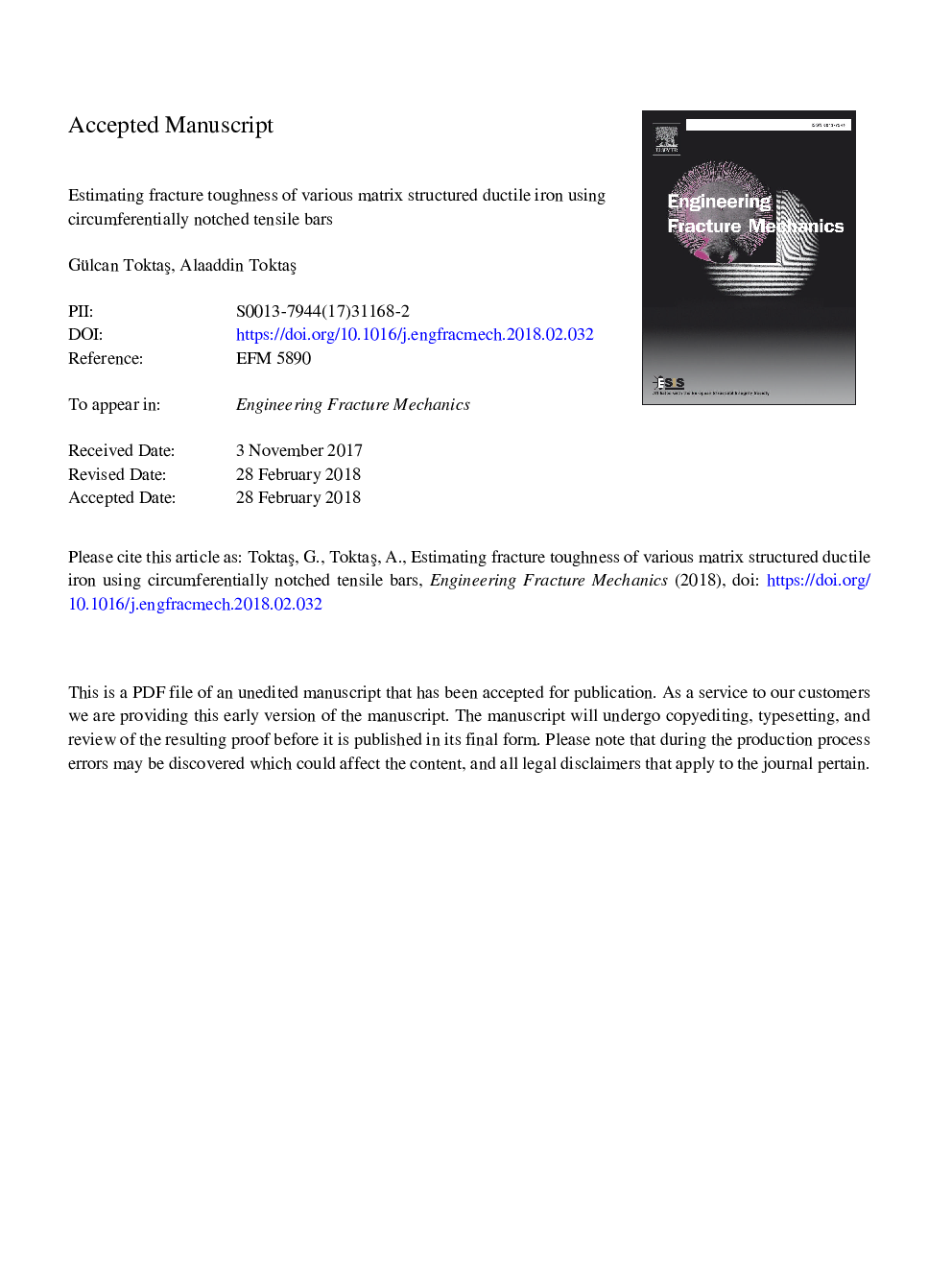| Article ID | Journal | Published Year | Pages | File Type |
|---|---|---|---|---|
| 7168863 | Engineering Fracture Mechanics | 2018 | 22 Pages |
Abstract
In this experimental study, circumferentially notched tensile (CNT) specimens with various notch root radii of 0.05, 0.1, 0.16, 0.25, 0.4, and 0.8â¯mm were employed to investigate the influence of matrix structure on the fracture toughness of 1.03% Cu, 1.25% Ni, and 0.18% Mo alloyed ductile iron. The assayed matrix structures in this study were ferritic, pearlitic/ferritic, pearlitic, tempered martensitic, lower and upper ausferritic. The microstructures were obtained by several heat treatment processes. The microstructures and morphology of broken surfaces of CNT specimens were also examined by the optical and scanning electron microscopes. It was observed that for the steady-phased (ferritic, pearlitic/ferritic, and pearlitic) matrixes, the increasing rates of fracture toughness under the applications of different notch tip radii were lower than that of the tempered martensitic, lower and upper ausferritic matrixes. It was also inferred that lower values of fracture toughness were obtained by the applied rapid method.
Related Topics
Physical Sciences and Engineering
Engineering
Mechanical Engineering
Authors
Gülcan ToktaÅ, Alaaddin ToktaÅ,
